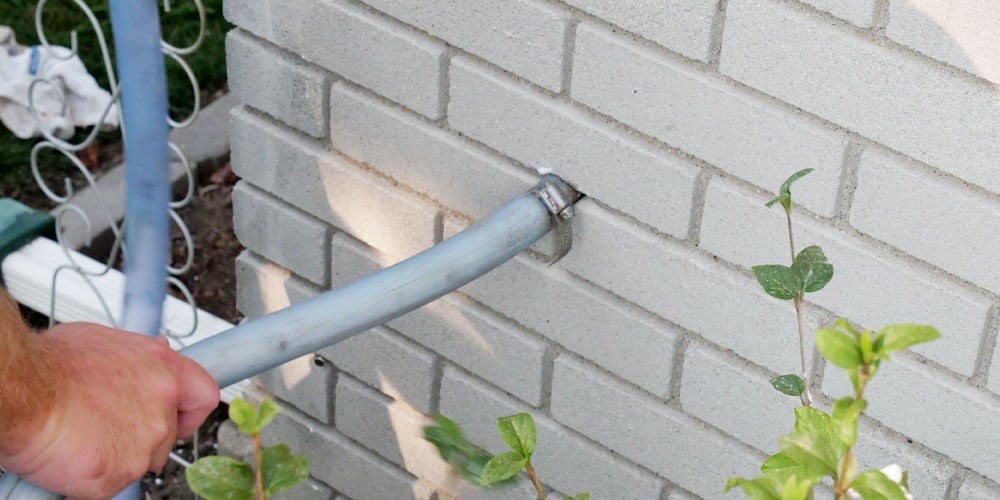Stud or Wythe Cavity? Can You Insulate Exterior Brick Walls?


When it comes to existing wall insulation, homeowners with brick exteriors have a big question—can you insulate exterior brick walls with RetroFoam, and if so, should it be in the stud or wythe cavity?
The short answer is absolutely. But, as with most home improvement projects, the devil is in the details.
Don’t fret, we’re about to break this down in a way that’ll make sense, even if you’re not a construction expert.
Let’s get into it.
Understanding Your Brick Home's Anatomy
First things first, let’s tackle some terminology.
The stud cavity is a part of your wall assembly made of, well, studs. These are the vertical frames you see in a house under construction, around which everything else is built. This space typically houses your home’s insulation, electrical wiring, and plumbing.
On the other hand, the wythe cavity might be a bit less familiar. This term refers to the small space between layers of brick or masonry and the stud cavity. Depending on your home’s construction, this gap can range from a mere quarter-inch to a full two inches. It’s known by various names – weep cavity, drain cavity, etc. – but all you need to know is that it’s the space between the outer brick and your interior walls.
Insulating Exterior Brick Walls with RetroFoam from the Outside
Dealing with brick exteriors can be slightly more complex than aluminum or vinyl but less so than wood.
For a home with a brick exterior, the installer will drill ⅝-inch holes across the top, middle, and bottom of each wall cavity, directly into the mortar. This step ensures that the installer fills each cavity completely.
After the foam has been injected, these holes are meticulously filled with mortar, maintaining the integrity of the brick wall’s appearance.
Now, should that foam be injected into the stud cavity or wythe cavity?
How to Insulate Exterior Brick Walls: Stud Cavity Insulation
Most commonly, contractors opt to insulate the stud cavity.
Why? It’s more straightforward.
The process and drill pattern for installing injection foam insulation here are more uniform, making the installation smoother and faster. Insulating the stud cavity not only follows a more traditional path but also allows for thicker insulation, providing a higher thermal resistance, or R-Value, which is great for your home’s energy efficiency.
How Do You Insulate a Brick Cavity? When to Consider the Wythe
While the stud cavity is standard, there are cases where the wythe cavity could be your best bet.
If the stud cavity is already filled, inaccessible, or nonexistent – think brick-on-brick-on-block constructions – the wythe cavity steps up as the alternative.
Insulating the wythe cavity can be particularly advantageous because it provides a continuous layer of foam behind the brick. This continuous layer is excellent for sealing the home from air leaks, establishing a solid building envelope, and minimizing air infiltration.
However, it’s important to note that this method might offer less overall insulation, meaning a potentially lower R-Value.
The Pros and Cons of Exterior Brick Wall Insulation
So, what’s the verdict?
Here are the key points if you’re considering injection foam insulation, like RetroFoam, for your brick house.
Stud Cavity Insulation Pros and Cons
This is the most common installation option, offers a higher R-Value, and is easier for contractors to install.
However, it can lead to thermal bridging due to the breaks in the insulation caused by the studs.
Wythe Cavity Insulation Pros and Cons
Insulating the Wythe cavity offers a continuous insulation layer, ideal for air sealing and building envelope.
It might be your only option if the stud cavity isn’t viable. However, due to thinner insulation, it typically offers a lower R-Value.
Taking Control of Your Home's Comfort and Energy Efficiency
Deciding whether to insulate the stud cavity or the wythe cavity depends on your specific situation. But one thing’s for sure – insulating your brick home can significantly enhance your comfort and energy efficiency.
Whether you opt for the stud cavity or go the wythe route, you’re taking a step in the right direction.
Are you ready to make your home more comfortable and energy-efficient? Check out our Find a Dealer page to connect with a RetroFoam dealer in your neck of the woods.
Remember, building is a science, but living comfortably doesn’t have to be rocket science.
Related Articles
How RetroFoam is Installed in Exterior Brick Walls
How to Tell if There is Insulation in the Wall
How Do RetroFoam Installers Know the Cavity is Full When Insulating Existing Walls?
About Eric Garcia
Eric brings his knowledge and training in building science, training in spray and injection foams from the manufacturers, more than eight years installing foam insulation, as well as selling and managing in the foam insulation industry. He is also BPI and Dale Carnegie certified and has taken several building science courses, including air sealing and building envelope. Eric is the Professor of Foam on our educational YouTube series Foam University. Even when Eric is off he is usually still “working” or thinking about work, but when he can get away he enjoys camping, hiking, hunting, and woodworking.



